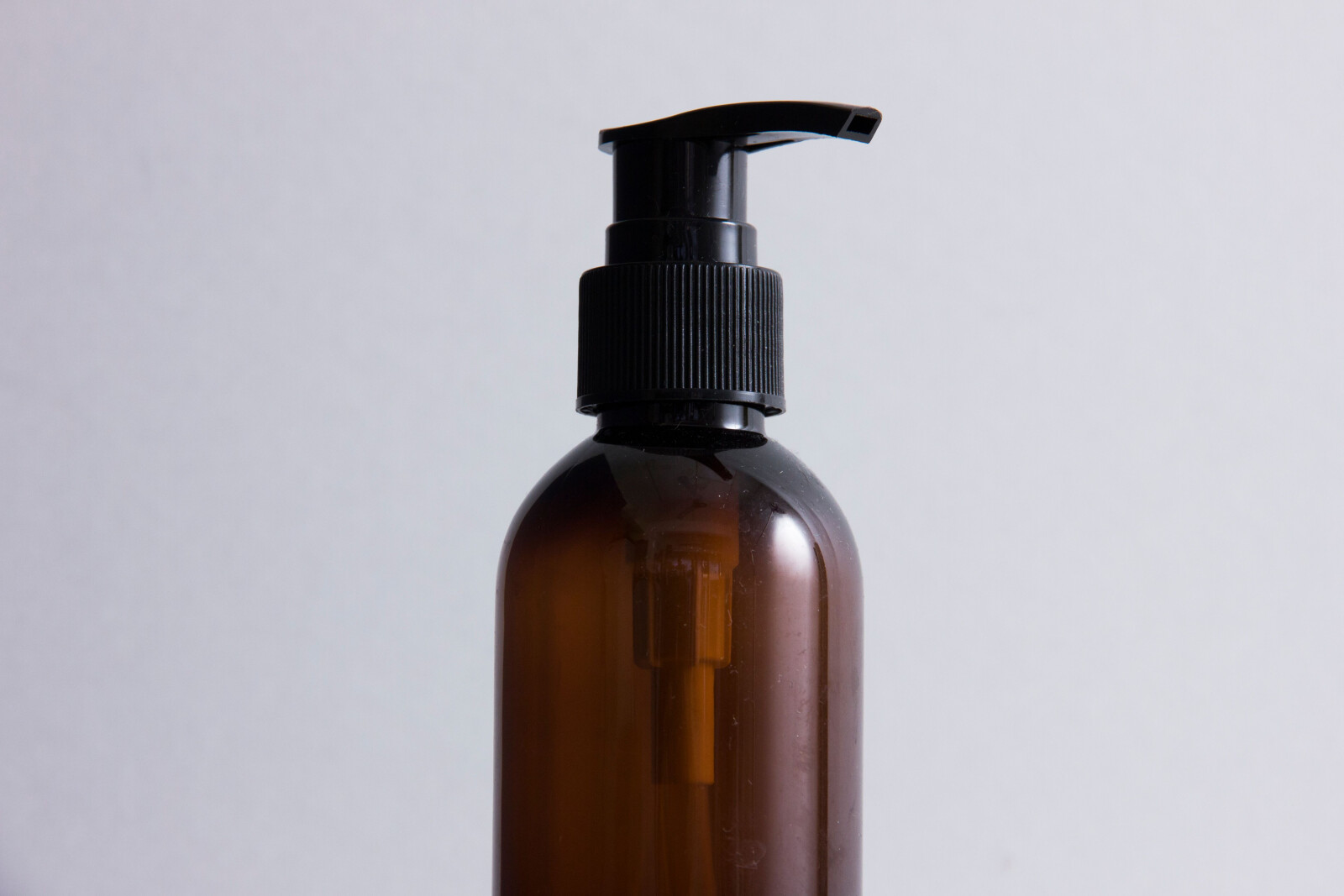Chemical Hair Straighteners
In a world where straight locks are often synonymous with beauty, chemical hair straighteners have become a popular choice. However, beneath the allure lies a complex web of chemicals disrupting the hair's natural bonds. Recent studies raise concerns about potential health risks, including cancer. This article aims to unravel the scientific workings, potential dangers, and ongoing litigation surrounding these widely-used products, promoting informed decisions about hair care.

Key Takeaways
- Chemical hair straighteners break up natural chemical bonds in hair strands, altering the protein structure of the hair.
- Chemical hair straightening has been linked to an increased long-term risk of uterine cancer and breast cancer.
- Harsh chemical solutions used in hair straightening can irritate the scalp and damage hair, and some products may contain formaldehyde, a known carcinogen.
- Individuals who used chemical hair straighteners and were diagnosed with certain medical conditions may qualify to file a chemical hair straightener lawsuit and seek compensation for damages.
Understanding the Popularity of Chemical Hair Straighteners
Despite the potential health risks associated with their use, chemical hair straighteners have gained considerable popularity due to their ability to provide users with smooth, straight hair that is often deemed desirable in many cultural and social contexts. The social implications of chemical hair straighteners are profound, with societal expectations of beauty often dictating the desire for straight hair, thus driving the demand for these products. Additionally, cultural influences on the popularity of chemical hair straighteners cannot be understated. In many cultures, straight hair is associated with attractiveness, professionalism, and social acceptance, further encouraging the use of chemical hair straighteners despite the associated health risks. The pervasive influence of societal beauty standards significantly contributes to the continued popularity of these potentially hazardous products.
The Science Behind Chemical Hair Straighteners
While many people regularly use chemical hair straighteners to achieve their desired look, understanding the science behind how these products work can provide valuable insight into their effects on our hair and overall health. These straighteners work by breaking and rearranging the disulfide bonds in hair, resulting in straight locks. However, they also contribute to environmental pollution due to harmful chemicals they release. Furthermore, the cultural significance of straight hair, perpetuated by societal beauty standards, greatly influences the popularity of these products. Yet, it's crucial to consider the environmental impact and potential health concerns linked to these chemical straighteners, encouraging a more informed and sustainable approach towards achieving our desired appearance.
Common Ingredients in Chemical Hair Straighteners
Several active ingredients commonly found in chemical hair straighteners include, but are not limited to, ammonium thioglycolate, formaldehyde, and sodium hydroxide. These compounds play crucial roles in the hair straightening techniques employed by these products. Ammonium thioglycolate, often used in creams and lotions, breaks down the hair's structural protein, enabling it to be reshaped. Formaldehyde, a potent preservative and disinfectant, helps to maintain the hair's newly straightened form, while sodium hydroxide, a strong alkaline substance, is used in relaxers to alter the hair's texture. However, these ingredients, often present in various hair straightening products, can have adverse effects, ranging from scalp irritation to potential health risks, necessitating caution in the usage and selection of these products.
The Application Process of Chemical Hair Straighteners
After the selection of a suitable chemical hair straightener, the application process begins, which requires careful adherence to specific steps to ensure effective straightening and minimal damage to the hair. This process generally involves various hair straightening techniques and the use of specific hair straightening tools. Initially, the hair is divided into several sections to evenly distribute the chemical solution. A brush or comb is used to apply the solution from roots to tips. After the solution has been applied, the hair is then carefully straightened using a straightening tool, often a flat iron, under controlled heat. It is crucial to follow the manufacturer's instructions regarding the duration of the application and rinsing process, to avoid potential hair damage.
Short-term Effects of Chemical Hair Straighteners on Hair Health
In the midst of the beauty industry's obsession with sleek, straight hairstyles, the short-term effects of chemical hair straighteners on hair health often fall by the wayside, leading to a lack of understanding about the potential damage caused by these products. The potential health risks associated with chemical hair straighteners include hair breakage, dryness, and thinning. These products work by breaking down the hair's natural protein structure, altering its texture and quality. Over time, this can lead to hair loss and scalp irritation. Additionally, frequent application of these chemicals can strip the hair of its natural oils, leaving it brittle and prone to breakage. Therefore, it's vital to be aware of these short-term effects and consider safer alternatives for hair straightening.
Long-term Consequences of Using Chemical Hair Straighteners
Both immediate effects and long-term consequences can be seen from the consistent use of chemical hair straighteners, with numerous studies highlighting potential risks such as increased susceptibility to various types of cancer and irreversible damage to the hair and scalp. The long-term health implications of these products are significant, and consumer awareness is essential to mitigate these risks. Continuous use can lead to severe scalp burns, permanent hair loss, and a compromised immune system. Moreover, some studies link the prolonged exposure to chemicals found in these straighteners to respiratory disorders and hormonal imbalances. Therefore, it is crucial for consumers to be aware of the potential long-term health consequences and choose products wisely.
The Connection Between Hair Straighteners and Health Risks
While many consumers use chemical hair straighteners for their immediate and noticeable effects, they may not fully understand the substantial health risks potentially associated with these products. Prolonged exposure can lead to serious health effects including skin irritation, allergic reactions, and respiratory issues. Some studies even suggest a potential link between the usage of these products and the onset of certain types of cancer. Despite these risks, consumer awareness remains alarmingly low. Many users remain ignorant of the potential dangers, often swayed by the lure of immediate results. It is thus essential to increase awareness about these potential health risks and encourage consumers to make informed choices about the products they use.
Unveiling the Hidden Dangers of Chemical Hair Straighteners
Revealing the hidden dangers of chemical hair straighteners is crucial in promoting awareness and safeguarding the health of users worldwide. These products often contain harmful substances known to pose serious health risks. Continuous use can lead to scalp irritations, hair loss, and even more severe consequences, such as hormonal imbalances and increased risk of certain cancers. The legal implications of using these products are also concerning. Many companies are currently facing lawsuits for the damaging effects of their products on consumers' health. As awareness grows, consumers are increasingly exploring alternatives and safe products. Natural and organic hair straighteners, for instance, offer a safer option. Understanding the hidden dangers of chemical hair straighteners is the first step towards healthier and safer hair care practices.
Exploring the Legal Side of Chemical Hair Straighteners
After delving into the health implications of chemical hair straighteners, it is crucial to also examine the legal consequences and implications that have arisen over time. Lawsuits have been filed against manufacturers of these products, alleging negligence and failure to warn consumers about the potential health risks. The legal implications of chemical hair straighteners have increased consumer awareness about these products, leading to a demand for more transparency from manufacturers. This has also highlighted the need for better consumer education about chemical hair straighteners and their potential risks. It's essential for consumers to not only understand the potential health risks but also their legal rights should they experience adverse effects from these products.
Case Studies: Victims of Chemical Hair Straighteners
Numerous individuals have suffered from the adverse effects of chemical hair straighteners, and their experiences offer valuable insights into the real-world implications of these products. The victims' stories illustrate not only the physical damage, such as hair loss and scalp burns but also the long-term health implications. Several women, for instance, have reported hormonal imbalances while others have been diagnosed with serious conditions like uterine fibroids and even breast cancer. These case studies underline the urgent need for increased consumer awareness and stricter regulations on the production and sale of chemical hair straighteners. As we continue to explore this topic, it becomes evident that the potential harm from these products extends far beyond cosmetic concerns, posing significant health risks.
Alternatives to Chemical Hair Straighteners
While the risks associated with chemical hair straighteners are indeed concerning, there are several safer and natural alternatives available that offer similar results. Understanding both the pros and cons of chemical hair straighteners can help individuals make informed decisions about their hair care. Although chemical treatments may offer instant and long-lasting straightness, they are associated with various health risks and potential damage to the hair's structure. Natural alternatives to chemical hair straighteners include methods like using a mixture of milk and honey or aloe vera. These natural ingredients can help relax hair curl and frizz without the health risks associated with chemical treatments. Despite taking a longer time to show results, they promote healthier and stronger hair in the long run.
Hair Care Tips for Those Using Chemical Straighteners
For individuals opting for the convenience and desired results of chemical straighteners, it's crucial to incorporate intentional hair care practices to counteract potential damage and maintain the hair's health. Part of hair care maintenance involves regular deep conditioning treatments to replenish moisture lost during the straightening process. Minimizing hair damage also necessitates reducing the frequency of chemical treatments and avoiding harsh mechanical manipulation like combing wet hair. It's also recommended to use protein treatments to reinforce hair strength and elasticity. Furthermore, maintaining a balanced diet rich in essential vitamins and minerals contributes to overall hair health. Always consult a professional hairstylist for advice tailored to your specific hair type and condition. These measures can help ensure your tresses remain healthy despite the stress of chemical straightening.
How to Identify Safe Hair Straightening Products
In order to ensure the safety and health of your hair, it's imperative to thoroughly look over the ingredient list when selecting hair straightening products. The importance of product labeling cannot be overstated, as it's your first line of defense against potential health risks. Avoid products containing harsh chemicals such as formaldehyde, ammonium thioglycolate, and sodium hydroxide, which can damage hair and pose health dangers. It's crucial to consider potential health risks of alternative hair straightening methods as well, such as heating tools, which can cause hair breakage and scalp burns if misused. Additionally, opt for products with natural ingredients and those that are free from parabens and sulfates. Remember, healthy hair is more than just its appearance; it's also about its overall well-being.
Expert Opinions on the Use of Chemical Hair Straighteners
Several experts express concern over the use of chemical hair straighteners, and their collective wisdom underscores the potential health risks associated with these products. Expert recommendations for minimizing the risks of chemical hair straighteners include opting for less harmful alternatives, limiting their usage, and ensuring proper ventilation during application to reduce inhalation of fumes. Furthermore, the application should be performed by a trained professional to prevent scalp burns and hair damage. The role of consumer education in promoting safer hair straightening practices cannot be overstated. Knowledge of the potential risks and understanding the ingredients in these products can empower consumers to make informed decisions, thus safeguarding their health while achieving their desired aesthetic.
The Future of Hair Straightening: Trends and Innovations
Advancements in technology and a growing understanding of hair biology are revolutionizing the hair straightening industry with innovative tools and safer chemical formulations. Innovative hair straightening techniques, such as infrared and ultrasonic technology, are emerging as less damaging alternatives to conventional methods. These techniques use heat and vibration to modify the hair structure, reducing the need for harsh chemicals. The future trends in hair styling are also pointing towards natural and organic products, with a significant shift towards hair health and sustainability. Companies are proactively investing in research and development to create safer, more effective straightening solutions. As the industry continues to evolve, it is expected that the balance between style and hair health will become a defining factor in consumer choice.
Frequently Asked Questions
How Do I Care for My Hair After Using a Chemical Hair Straightener?
After undergoing a straightening treatment, it's crucial to provide post-straightening nutrition to your hair. This includes hydrating treatments and protein-infused products to prevent damage and dryness. Regular trims will also maintain the health of your hair. Consider straightening alternatives, such as heat-free methods, to limit potential harm to your hair. Always consult a haircare professional for personalized advice based on your hair's specific needs and characteristics.
Are There Any Safe Chemical Hair Straighteners Available in the Market?
In today's market, there are hair straightening products that claim to be safer due to their natural ingredients. However, the safety of a product largely depends on its specific formulation. It's crucial to research and understand the ingredients used. Natural alternatives such as keratin treatments or those with argan or coconut oil might be less damaging. Despite these alternatives, it is always vital to follow proper usage instructions to minimize potential risks.
What Are the Early Signs That My Hair or Scalp Is Reacting Negatively to a Chemical Hair Straightener?
Early signs of negative reactions to a hair product may include excessive dryness, brittleness, hair thinning, or an itchy or burning scalp. This could indicate that an ingredient is not suitable for your hair or scalp. Ingredient analysis can help identify potential culprits. Natural alternatives may offer a safer option, but it's important to remember that "natural" doesn't always mean "harmless". Always patch test new products and consult a professional if symptoms persist.
Can I Use Other Hair Treatments or Products Along With a Chemical Hair Straightener?
In the realm of hair care, the use of multiple treatments or products simultaneously requires careful consideration. Balancing the potential benefits and detriments is vital. Product alternatives or varying straightening techniques may offer desired results while minimizing potential harm. However, it's crucial to consult with a hair care professional or dermatologist before integrating new treatments, to ensure compatibility and avoid adverse reactions. Individual hair characteristics and overall health should be the guiding factors.
What Are the Immediate Steps to Take if I Experience Adverse Effects From a Chemical Hair Straightener?
If you experience adverse effects from a product, seek immediate medical attention. Document any symptoms and the product used. Contact the product manufacturer to report your experience. Consider straightener alternatives to avoid further damage. Home remedies, such as olive oil or coconut milk, can be gentle options. Consult with a dermatologist for personalized advice. If symptoms persist, consider legal recourse. Remember, your health should always be the priority.
Conclusion
The enigma of chemical hair straighteners, laced with allure and controversy, remains a hot topic. The labyrinth of science and litigation intertwines, casting a shadow on the industry. Yet, the allure of straight, glossy locks persists. The quest for safer alternatives, coupled with an informed public, may pave the way for a revolution in hair care. As the gavel of justice weighs in, the future of chemical hair straighteners hangs in the balance, teetering on the precipice of change.



